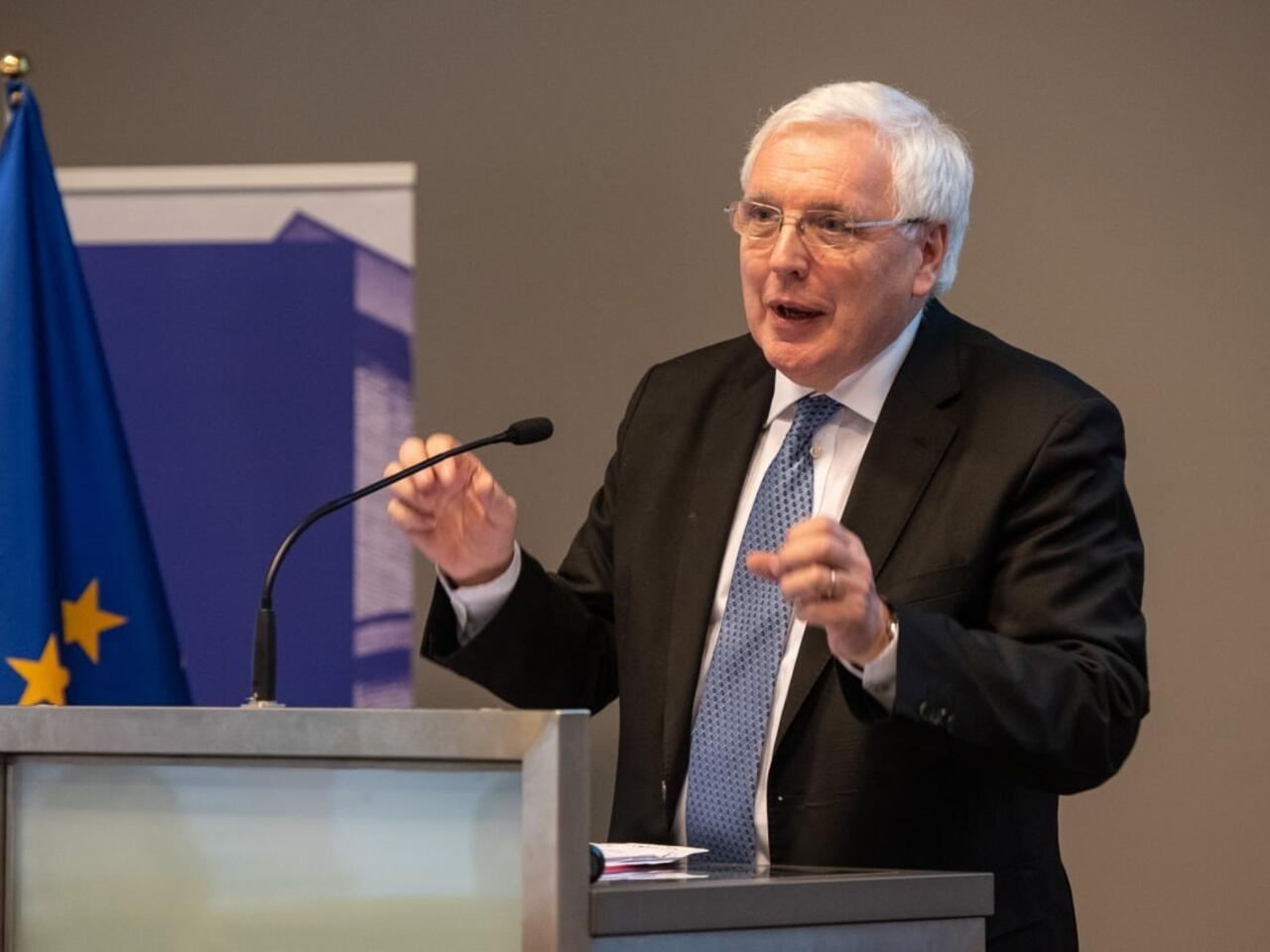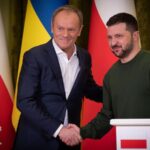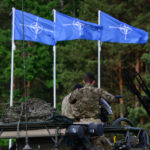In Washington, a three-day NATO summit has kicked off, marking a significant milestone. Jamie Shea, a retired NATO official, discussed the summit’s decisions for Ukraine, the potential for another dramatic moment like in Vilnius, and the meaning behind NATO countries’ calls for peace.
Background on Jamie Shea: Jamie Shea, a retired NATO member, began his career with the Alliance in 1980. From 2010 to 2018, he served as the Deputy Assistant Secretary-General for Emerging Security Challenges, while also working as a professor at the College of Europe in Bruges.
No NATO Membership Invitation but New Aid Packages for Ukraine
It’s expected that in the final communiqué, leaders will agree on Ukraine’s future in NATO, with the US previously proposing a “bridge to membership.” How important is this “bridge,” especially after dropping the Membership Action Plan (MAP)?
I believe President Zelensky will again be disappointed, as he was after the Madrid and Vilnius summits, by not receiving a membership date. He won’t get specific conditions for membership or a timetable he hoped for. However, I think NATO is working hard to convince him that even without a membership date, preparations are moving in the right direction. This is the essence of the “bridge to membership” phrase.
I think this will be clearly stated in the declaration, indicating that Ukraine is on an irreversible path to membership. So, no ambiguity—the direction is clear, especially after the war with Russia ends.
Secondly, it’s important that NATO is creating a new command in Wiesbaden, Germany, for better coordination of training the Ukrainian army and transferring weapons and equipment. This will make the process more consistent and tailored to Ukraine’s needs.
NATO will not only provide Ukraine with weapons for immediate use but also consider the long-term transformation of the Ukrainian army to make it a full-fledged NATO army with Western standards, Western equipment, and full operational compatibility with the Alliance.
Additionally, the 40 billion euros in annual aid will ensure there are no funding gaps. All of this means that Ukraine is de facto becoming a NATO member state with each passing day, indistinguishable from other member countries. Even if the official membership and security guarantees under Article 5 come a bit later.
Avoiding Another Vilnius Drama
In your opinion, how important is it now to avoid repeating the NATO summit drama in Vilnius, especially for President Biden ahead of the US presidential elections?
I think the first thing is to avoid drama. President Zelensky knows he won’t receive an invitation to join NATO in Washington. What happened in Vilnius was a case of high expectations being dashed at the last minute. I believe NATO is trying to avoid that this time by involving Ukraine early on with an aid package it can count on.
So, no surprises, and providing only what has been agreed upon, including the creation of a new training center and the Patriot air defense systems that President Zelensky has called for, which are obviously crucial for Ukraine. Additionally, as I mentioned, the 40 billion euros in funding, the command in Wiesbaden, and Ukraine’s gradual integration into NATO.
I also think there will be many bilateral offers of assistance on the sidelines of the summit. For example, the Dutch will be clarifying the transfer of F-16 fighters. The new British Labour government has announced a new ammunition package for Ukraine. Last week, the US announced another package worth 2.5 billion dollars.
So, President Zelensky will return home with many new proposals, seeing the “glass half full rather than half empty.”
Regarding Biden, he managed to push an additional budget of 61 billion dollars for Ukraine through Congress. This has an impact on the battlefield as weapon transfers are happening. But who will win the US elections in November—no one can predict right now. However, NATO can’t do much about that. We’ll wait and see what happens in November.
Regarding the 40 Billion Euros Annual Military Aid for Ukraine
Are the allies talking about new money, or does this sum include what’s already allocated on a bilateral aid level?
I think NATO still needs to provide some clarity on this. As I understand it, and as Secretary-General Stoltenberg has stated, NATO countries are spending 40 billion euros annually on military aid for Ukraine. This includes bilateral aid, support from NATO, the EU, and so on. However, the average annual support sum is 40 billion euros. So, the idea is to maintain this level at 40 billion euros for as long as the war continues.
I don’t think this involves new money. It’s a commitment to continue providing the already promised funds, ensuring no crisis occurs, as was the case with the US Congress blocking aid for six months. Then Ukraine suddenly ran out of money, weapons, and ammunition, allowing the Russians to advance.
Mark Rutte to Continue Stoltenberg’s Line
During the summit, leaders will welcome Mark Rutte as the newly elected Secretary General of the Alliance. What do you think his role will be over the next five years?
I believe we will see a lot of continuity in NATO’s policy with Rutte. When there is a leader like Stoltenberg, who has led NATO for 10 years, there’s always a debate among leaders—do we want something different or more of the same?
In Rutte’s case, I think NATO is signaling that they want more of the same. The Alliance wants a prime minister with extensive experience, who knows everyone, who successfully dealt with Trump when he was in the White House, and who is a strong supporter of Ukraine—Rutte stands behind the F-16 package for Ukraine.
He is also skilled in negotiations, having dealt with four different Dutch coalitions, which is no easy feat.
So, I think during Rutte’s tenure, you’ll see a continuation of Stoltenberg’s style. The only difference is that Rutte comes from an EU country. He is likely more interested in closer NATO-EU relations, especially in defense industrial production, cyber defense, resilience, and new technologies.
He will show a greater interest in NATO-EU relations than Stoltenberg possibly did. So, there might be a difference in that regard, but in terms of policy, behavior, and public communication, you will see a lot of consistency because that is what NATO actually wants right now.
Hybrid Attacks on NATO Countries: There Will Be a Response
Currently, NATO is talking about the increase in hybrid attacks on Alliance member countries. Do you expect any decisions to enhance security within the bloc?
Resilience will be key during the summit because Russia is jamming GPS signals in the Baltic region, carrying out sabotage attacks, using nerve agents for assassinations in the UK. There are also fires in Poland and Germany, and Russians are sending illegal migrants across borders. There are many ways Russia is destabilizing NATO countries.
I think a major new initiative on underwater infrastructure will be announced at the summit. There will be the creation of a new NATO center to protect critical maritime infrastructure, such as telecommunications cables, internet cables, and pipelines in the Baltic Sea, following recent attacks on Nord Stream 2 and cables connecting Estonia to Finland.
I think this will be something new. However, the focus will be on increasing cyber defense resilience, cooperation with the EU in civil protection, and addressing GPS signal interference, where the International Telecommunication Union has criticized Russia for disrupting civilian air traffic by jamming GPS signals.


